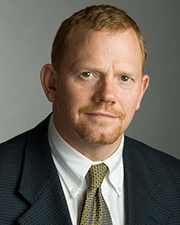News:
Owners Developers & Managers
Posted: February 28, 2013
Community Associations Institute celebrates 40 years
In 1964, the Urban Land Institute (ULI) published Technical Bulletin No. 50, a document that called for the creation of a national organization to provide education and act as a clearinghouse of information and best practices for the growing community association housing market.
The principal author was Byron Hanke, one of Community Associations Institutes (CAI) eventual founders along with Lincoln Cummings, then president of Whetstone Homes Corp. and vice president of Montgomery Village Foundation in Maryland; Dave Rhame, a developer and chair of the National Association of Housing Cooperatives; and David Stahl, former public official and ULI executive vice president. Cummings and Rhame would eventually lead the fledgling organization.
But there was a lot of work to be done before leaders would be selected. It took nine years and an abundance of discussion, fortitude and planning—including backyard strategy sessions at Hanke's Calvert, Md., home. But good ideas persist, and this idea became CAI.
The official date of birth of CAI was September 20, 1973 - 40 years ago this year. There were fewer than 30,000 U.S. common-interest communities in 1973. Today, more than 64 million Americans live in an estimated 325,000 community associations, condominium communities and cooperatives. The first issue of CAI News, in 1974, was distributed to 200 members. Today, CAI's flagship national magazine, Common Ground, is distributed to more than 32,000 members—in both print and digital formats.
CAI's growth was slow but steady-at first. Membership surpassed 1,000 by the end of 1975. It took eight more years to reach the 5,000 mark. The organization we know today began to take shape during the late 1970s and 1980s.
1975: The first national conference takes place in New Orleans.
1977: Association Management, the first Guide for Association Practitioners, is published.
1978: CAI welcomes its 10th chapter and the New England Chapter is among those then in existence.
1980: The Professional Management Development Program is launched.
1982: The Professional Community Association Manager (PCAM) designation is introduced.
1984: The first issue of Common Ground is published.
1985: CAI welcomes its 30th chapter.
1986: California members form the first of CAI's 35 legislative action committees. Legislative action committees would follow in the New England chapter states of Maine, Massachusetts, Rhode Island and Vermont.
1988: Membership tops 10,000.
CAI continued to expand in the 1990s, creating www.caionline.org, the popular ABCs course (now "Essentials"), Community Associations Press (now CAI Press) and the College of Community Association Lawyers. Other milestones included publishing the first issue of Community Management (now Community Manager), topping 50 chapters and reaching 15,000 members in 1996. Locally, the CAI New England chapter continued to make available to members Condo Media magazine and added a chapter website www.caine.org that provided additional resources specific to the needs of New England chapter members.
CAI has been equally ambitious in the new century, expanding its website, offering webinars, developing Rights and Responsibilities for Better Communities, expanding its public policy initiatives, creating the Educated Business Partner distinction and offering its first online course, The Essentials of Community Association Management. Meanwhile, membership surpassed 25,000 in 2005 and topped 30,000 - in 60 chapters - in 2010.
Like every organization, CAI had to adapt to meet the challenges of a growing and changing industry. New and enhanced member benefits were developed. Governance overhauls were debated and implemented. The membership structure itself was reengineered, mostly recently in 2005 to encourage individual memberships for community managers and homeowner volunteer leaders.
"The growth of CAI and the New England chapter is due in large part to the hundreds of industry professionals and homeowners who volunteer their time and expertise," said Claudette Carini, CAI New England chapter executive director. "I have seen first hand over the past 18 years the evolution of member benefits and services that address the unique and ever changing needs of community associations around New England."
Jerry Levin, CAI's president in the early 1990s said it best, "Without the total cooperation of leadership, chapters and individual members, there would be no CAI today."
Visit www.caionline.org/CAI40 to learn more.
Paul Garrett, CMCA, AMS, PCAM, is 2013 CAI-NE chapter president, and president and CEO of Maine Properties, Inc., Scarborough, Me.
Past Presidents Remember:
"A lot of my success has been because of the things I've learned and the people I've been able to connect with through CAI." - Ronald Kirby, 1981-82
"When I think about CAI, I have a warm feeling and a sense of shared accomplishment. ... CAI is just special." - Katharine Rosenberry, Esq., 1988-89
"Our slogan, 'CAI—Making Community Associations Better,' held a significance and a consequence that few knew." - George Nowack, Esq., 1994-95
"No other organization with which I have been affiliated exudes the camaraderie, support, sharing and care as does CAI." - Paul Grucza, CMCA, AMS, PCAM, 2004-05
"We are the go-to organization for those who want to know about the community association industry."
- Kathryn Danella, CMCA, LSM, PCAM, 2012.
MORE FROM Owners Developers & Managers
Atlantic Property Management expands facilities maintenance platform: Assigned two new facility management contracts in RI
Boston, MA Atlantic Property Management (APM) has expanded its internal facilities maintenance and operations platform and has been assigned two new facility management contracts in Rhode Island. The properties will undergo redevelopment and repositioning

Quick Hits
Columns and Thought Leadership

Connecticut’s Transfer Act will expire in 2026. What should property owners do now? - by Samuel Haydock
A major shift in Connecticut’s environmental law is on the horizon: the state’s Transfer Act will expire next year, ushering in a new cleanup program with broader applicability and new triggers.

Unlocking value for commercial real estate: Solar solutions for a changing market - by Claire Broido Johnson
As the commercial real estate market continues to navigate the disruptive forces of rising vacancy rates and increasing operating costs, landlords are under pressure to find new levers to protect income and strengthen asset performance. Amid these challenges, onsite solar and battery storage – particularly when financed through third-party ownership models – are emerging not just as environmental upgrades, but as powerful financial strategies.

New Quonset pier supports small businesses and economic growth - by Steven J. King
Quonset recently celebrated a milestone nearly 70 years in the making when federal, state, and local leaders joined us for the ribbon cutting of the new Terminal 5 Pier and Blue Economy Support Docks at the Port of Davisville.

Tenant Estoppel certificates: Navigating risks, responses and leverage - by Laura Kaplan
When it comes to the sale or financing of real property, tenant estoppel certificates are not just formalities – they are crucial documents that confirm the status of existing leases. Tenant estoppel certificates offer prospective buyers and lenders necessary assurance regarding the property’s financials and any

 (1).png)







 (1).png)
